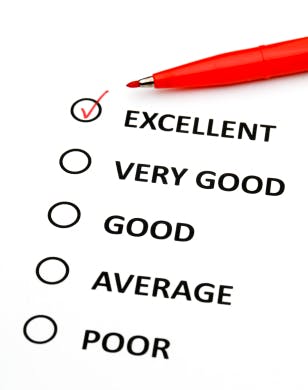My youngest started fifth grade last week, and as I was combing through the official forms and literature, making sure he had all his school supplies and such, I happened upon the grading system:
- A+ 99-100
- A 95-98
- A- 93-94
- B+ 91-92
- B 87-90
- B- 85-86
- C+ 83-84
- C 79-82
- C- 77-78
- D+ 75-76
- D 72-74
- D- 70-71
- F 69 and under
What? Since when is a 92 a B? Or an 84 a C? And a 76 is a D??
High standards, or just smoke and mirrors?
What the heck is happening here? I suppose two plus two no longer equals four, either? (Or at least it feels that way.)
I asked a friend who works with various schools in our district, “What’s up with these grading schedules? When I was a student, a 90 was an A, and an 80 was a B, period. That’s not good enough anymore?”
She explained to me that if schools want to stay competitive, they have to show their students are meeting high standards, which includes 92 B’s and 84 C’s. I told her I thought the whole thing was ridiculous, and it felt like smoke and mirrors, too.
Plus, are kids getting any smarter because of it? My vote would be no.
Mostly, however, the exchange reminded me of one of the most exasperating conversations I’d ever had with a manager about performance reviews.
Jumping through hoops
This manager and I were discussing the company’s new evaluation forms, which required managers to rate each employee overall as “With Distinction,” “Proficient,” “Meets Standard,” or “Needs Improvement.” So far so good.
But the manager had a problem. He refused to rate any of his employees “With Distintion,” because that would mean (in his opinion) that he viewed the employee as perfect, and nobody’s perfect.
How dumb.
I tried to convince the manager that if an employee had distinguished herself she deserved a rating that reflected her accomplishments, and doing so wasn’t declaring her “perfect” but as simply distinguished among her peers. I reminded him that the company had set the standard, and it needed to be attainable. A standard impossible to attain served no useful purpose to anyone and was demoralizing as hell to boot, I said.
He didn’t buy it. He also wasn’t moved by the accompanying definition of “distinguished performance,” which did not reference flawlessness.
(By the way, when this manager received his own “perfect” rating, he accepted it with nary a peep, and I know he wasn’t stupid enough to think he was perfect.)
When a “high” standard backfires
Turning B’s to C’s and A’s to B’s isn’t exactly expecting kids to walk on water before giving them a nod, but it’s close.
Bottom line: Students have to work harder to get the same reward, and to what end? If not enough students do well enough to make the school look good enough, the powers that be will lower the curve anyway.
I’m 100 percent for high standards, and I definitely want kids to learn, but I’m not sure this method meets that end.
In the same vein, taking an employee’s efforts for granted such that you won’t acknowledge superior performance out of some ridiculous notion that no one is perfect, well, it’s just another way of not rewarding good performance — and that’s absurd and counterproductive.
It’s also another good reason to have someone objective — like a skilled HR professional — review the evaluations to make sure all the parts combine into a coherent whole.
Perfect is not a worthwhile goal
Given the high cost and competition for decent education in this country (sad), I’m all but certain the trend toward more stringent (if ineffective) grading schedules isn’t going away anytime soon, and most of us don’t have any control over that.
However, many of you reading this piece have a good deal of control over the way performance evaluations are conducted in your organization. (I didn’t, but then again I had one of those terrible HR jobs. I’m hoping yours isn’t.)
Use that control to encourage managers to view stellar performance as something less than perfect, which is perfectly OK.
